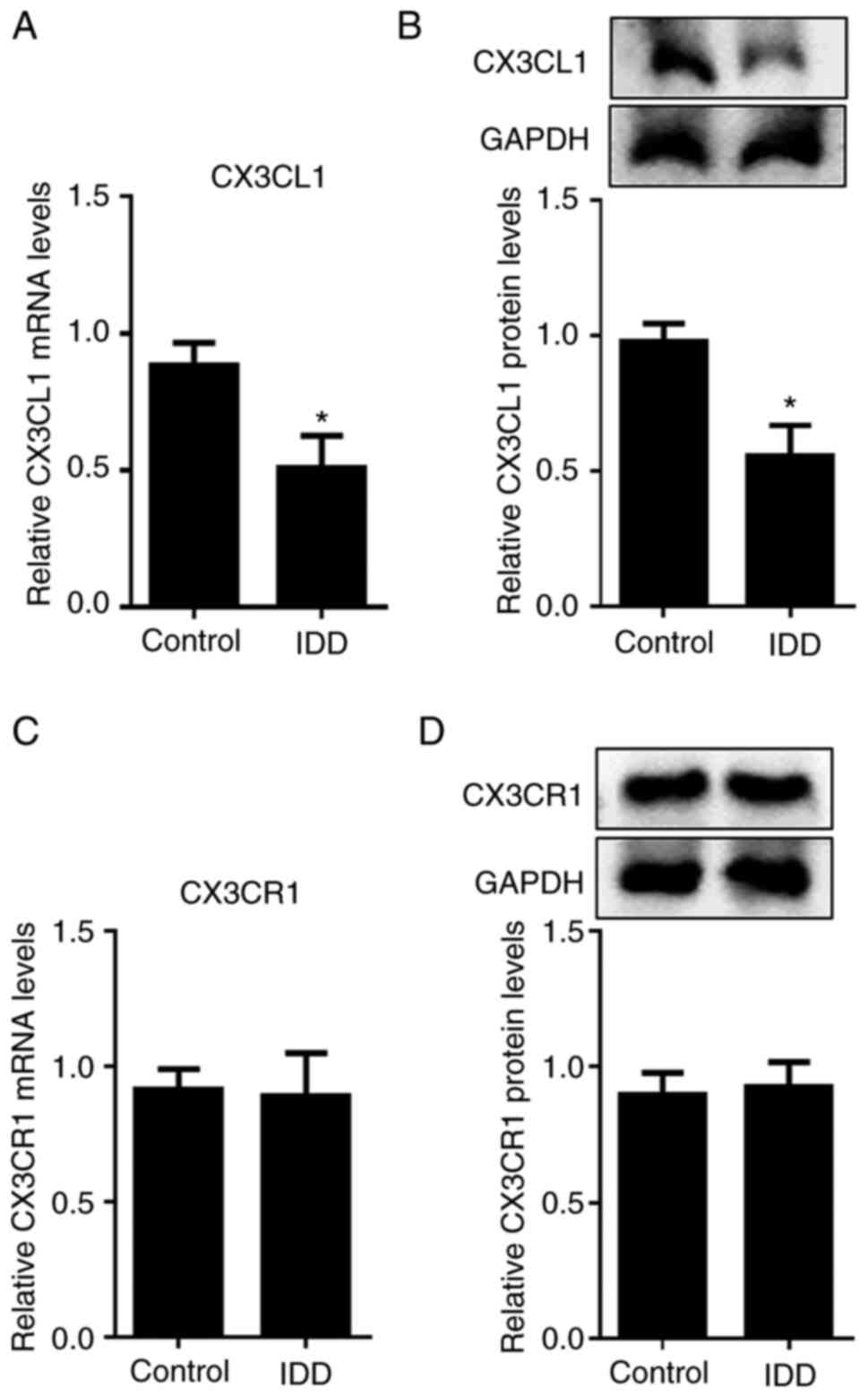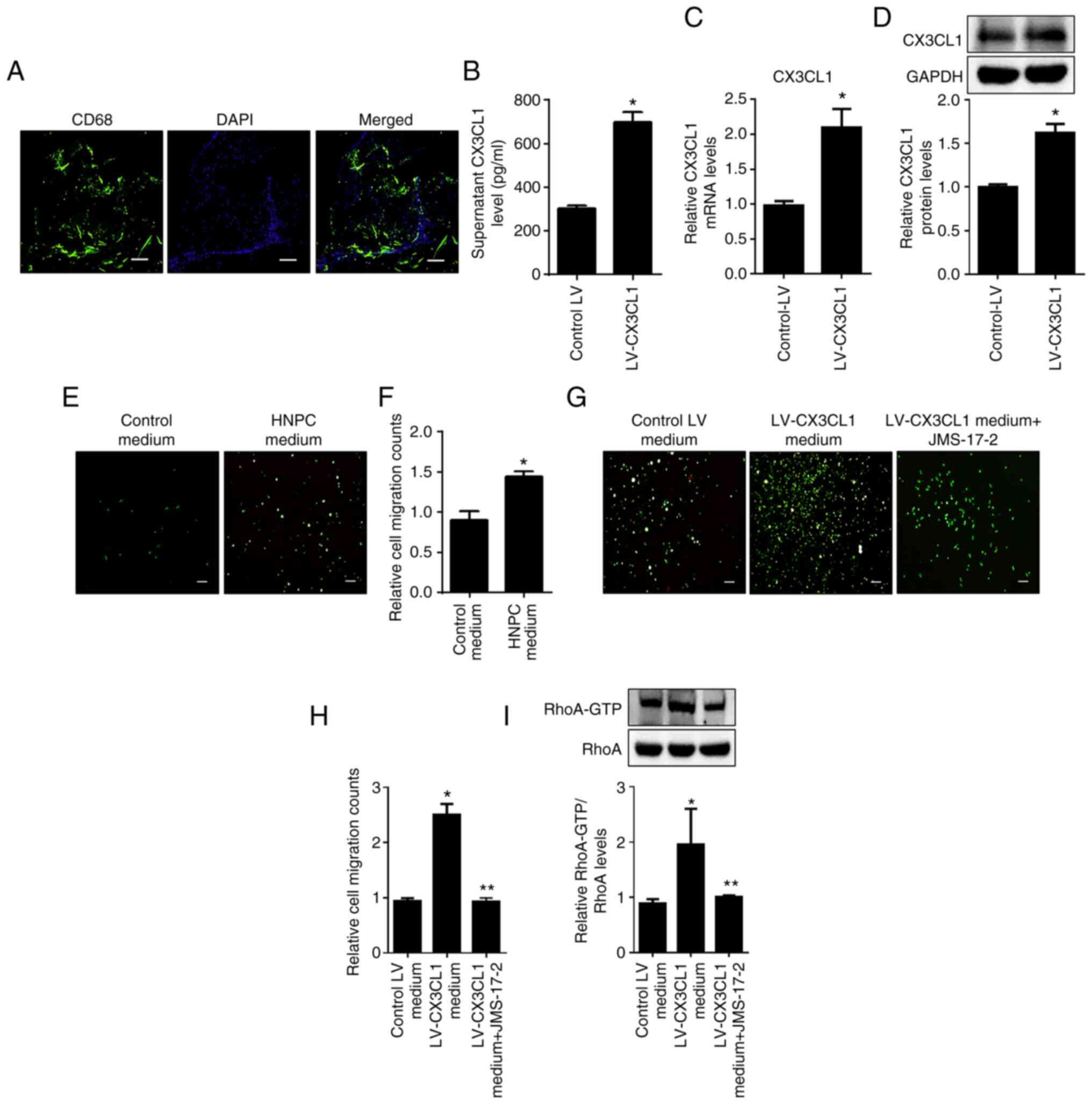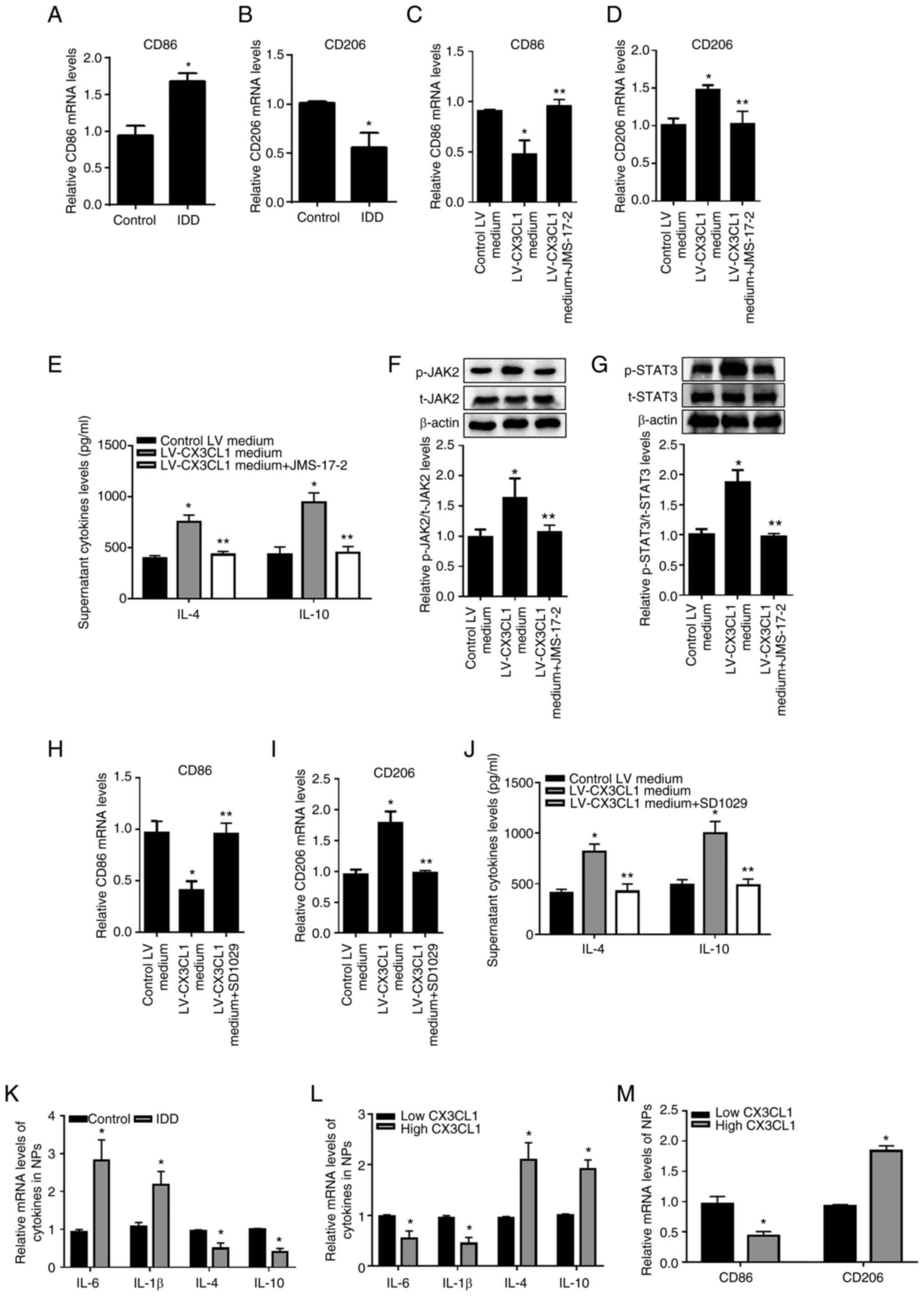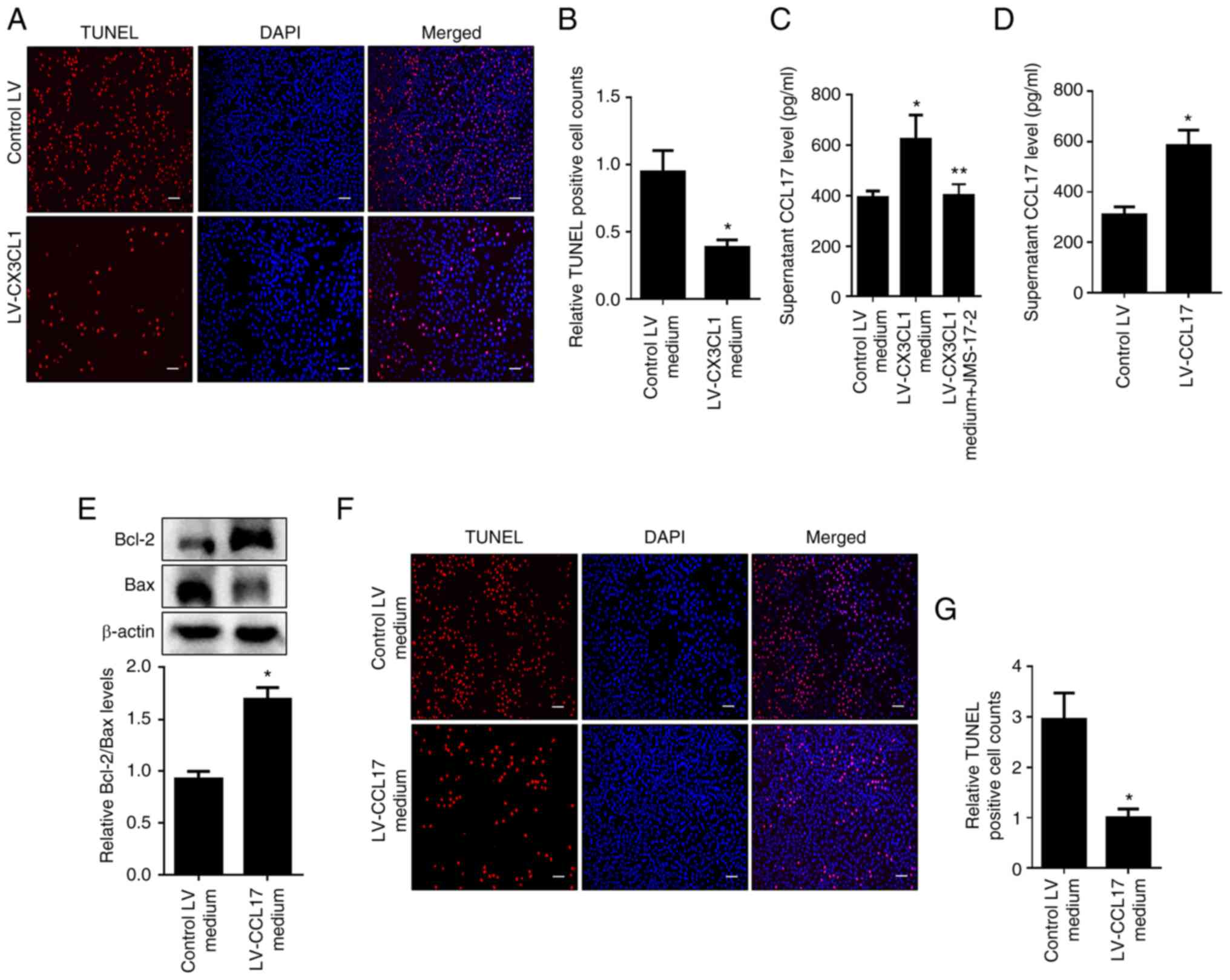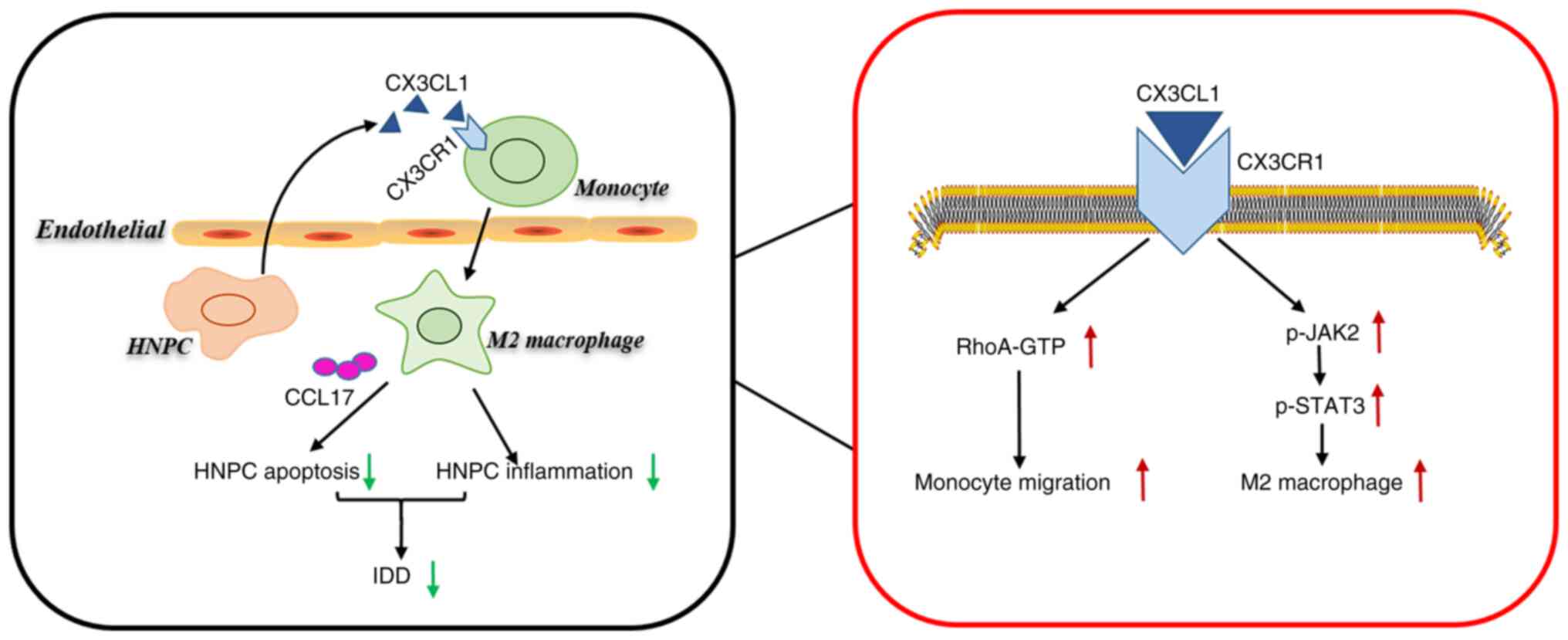|
1
|
Peng B, Hao J, Hou S, Wu W, Jiang D, Fu X
and Yang Y: Possible pathogenesis of painful intervertebral disc
degeneration. Spine. 31:560–566. 2006.PubMed/NCBI View Article : Google Scholar
|
|
2
|
Adams MA, Freeman BJ, Morrison HP, Nelson
IW and Dolan P: Mechanical initiation of intervertebral disc
degeneration. Spine (Phila Pa 1976). 25:1625–1636. 2000.PubMed/NCBI View Article : Google Scholar
|
|
3
|
Freemont AJ, Watkins A, Le Maitre C,
Jeziorska M and Hoyland JA: Current understanding of cellular and
molecular events in intervertebral disc degeneration: Implications
for therapy. J Pathol. 196:374–379. 2002.PubMed/NCBI View Article : Google Scholar
|
|
4
|
Jia J, Nie L and Liu Y: Butyrate
alleviates inflammatory response and NF-κB activation in human
degenerated intervertebral disc tissues. Int Immunopharmacol.
78(106004)2020.PubMed/NCBI View Article : Google Scholar
|
|
5
|
Yu H, Liu Y, Xie W, Xie Q, Liu Q and Cheng
L: IL-38 alleviates the inflammatory response and the degeneration
of nucleus pulposus cells via inhibition of the NF-κB signaling
pathway in vitro. Int Immunopharmacol. 85(106592)2020.PubMed/NCBI View Article : Google Scholar
|
|
6
|
Risbud MV, Fertala J, Vresilovic EJ,
Albert TJ and Shapiro IM: Nucleus pulposus cells upregulate
PI3K/Akt and MEK/ERK signaling pathways under hypoxic conditions
and resist apoptosis induced by serum withdrawal. Spine (Phila Pa
1976). 30:882–889. 2005.PubMed/NCBI View Article : Google Scholar
|
|
7
|
Erwin WM, Islam D, Inman RD, Fehlings MG
and Tsui FW: Notochordal cells protect nucleus pulposus cells from
degradation and apoptosis: Implications for the mechanisms of
intervertebral disc degeneration. Arthritis Res Ther.
13(R215)2011.PubMed/NCBI View
Article : Google Scholar
|
|
8
|
Apostolakis S and Spandidos D: Chemokines
and atherosclerosis: focus on the CX3CL1/CX3CR1 pathway. Acta
Pharmacol Sin. 34:1251–1256. 2013.PubMed/NCBI View Article : Google Scholar
|
|
9
|
Limatola C and Ransohoff RM: Modulating
neurotoxicity through CX3CL1/CX3CR1 signaling. Front Cell Neurosci.
8(229)2014.PubMed/NCBI View Article : Google Scholar
|
|
10
|
Wojdasiewicz P, Poniatowski LA, Kotela A,
Deszczyński J, Kotela I and Szukiewicz D: The chemokine CX3CL1
(fractalkine) and its receptor CX3CR1: Occurrence and potential
role in osteoarthritis. Arch Immunol Ther Exp (Warsz). 62:395–403.
2014.PubMed/NCBI View Article : Google Scholar
|
|
11
|
Aoyama T, Inokuchi S, Brenner DA and Seki
E: CX3CL1-CX3CR1 interaction prevents carbon tetrachloride-induced
liver inflammation and fibrosis in mice. Hepatology. 52:1390–1400.
2010.PubMed/NCBI View Article : Google Scholar
|
|
12
|
Huang ZZ, Li D, Liu CC, Cui Y, Zhu HQ,
Zhang WW, Li YY and Xin WJ: CX3CL1-mediated macrophage activation
contributed to paclitaxel-induced DRG neuronal apoptosis and
painful peripheral neuropathy. Brain Behav Immun. 40:155–165.
2014.PubMed/NCBI View Article : Google Scholar
|
|
13
|
Oh IS, Suh DW and Ha KY: Hypertrophy of
the ligament flavum in degenerative lumbar stenosis associated with
the increased expression of fractalkine (CX3CL1)/CX3CR1. chemokine.
54:380–385. 2013.PubMed/NCBI View Article : Google Scholar
|
|
14
|
Yang C, Cao P, Gao Y, Wu M, Lin Y, Tian Y
and Yuan W: Differential expression of p38 MAPK α, β, γ, δ isoforms
in nucleus pulposus modulates macrophage polarization in
intervertebral disc degeneration. Sci Rep. 6(22182)2016.PubMed/NCBI View Article : Google Scholar
|
|
15
|
Liu ZH, Sun Z, Wang HQ, Ge J, Jiang TS,
Chen YF, Ma Y, Wang C, Hu S, Samartzis D and Luo ZJ: FasL
expression on human nucleus pulposus cells contributes to the
immune privilege of intervertebral disc by interacting with
immunocytes. Int J Med Sci. 10:1053–1060. 2013.PubMed/NCBI View Article : Google Scholar
|
|
16
|
Kim JH, Moon HJ, Lee JH, Kim JH, Kwon TH
and Park YK: Rabbit notochordal cells modulate the expression of
inflammatory mediators by human annulus fibrosus cells cocultured
with activated macrophage-like THP-1 cells. Spine (Phila Pa 1976).
37:1856–1864. 2012.PubMed/NCBI View Article : Google Scholar
|
|
17
|
Park JJ, Moon HJ, Park JH, Kwon TH, Park
YK and Kim JH: Induction of proinflammatory cytokine production in
intervertebral disc cells by macrophage-like THP-1 cells requires
mitogen-activated protein kinase activity. J Neurosurg Spine.
24:167–175. 2016.PubMed/NCBI View Article : Google Scholar
|
|
18
|
Ni L, Zheng Y, Gong T, Xiu C, Li K,
Saijilafu Li B, Yang H and Chen J: Proinflammatory macrophages
promote degenerative phenotypes in rat nucleus pulpous cells partly
through ERK and JNK signaling. J Cell Physiol. 234:5362–5371.
2019.PubMed/NCBI View Article : Google Scholar
|
|
19
|
Ling Z, Liu Y, Wang Z, Zhang Z, Chen B,
Yang J, Zeng B, Gao Y, Jiang C, Huang Y, et al: Single-cell RNA-Seq
analysis reveals macrophage involved in the progression of human
intervertebral disc degeneration. Front Cell Dev Biol.
9(833420)2021.PubMed/NCBI View Article : Google Scholar
|
|
20
|
Yamagishi A, Nakajima H, Kokubo Y,
Yamamoto Y and Matsumine A: Polarization of infiltrating
macrophages in the outer annulus fibrosus layer associated with the
process of intervertebral disc degeneration and neural ingrowth in
the human cervical spine. Spine J. 22:877–886. 2022.PubMed/NCBI View Article : Google Scholar
|
|
21
|
Yamamoto Y, Kokubo Y, Nakajima H, Honjoh
K, Watanabe S and Matsumine A: Distribution and polarization of
hematogenous macrophages associated with the progression of
intervertebral disc degeneration. Spine (Phila Pa 1976).
47:E149–E158. 2022.PubMed/NCBI View Article : Google Scholar
|
|
22
|
Li C, Xu MM, Wang K, Adler AJ, Vella AT
and Zhou B: Macrophage polarization and meta-inflammation. Transl
Res. 191:29–44. 2018.PubMed/NCBI View Article : Google Scholar
|
|
23
|
Bashir S, Sharma Y, Elahi A and Khan F:
Macrophage polarization: The link between inflammation and related
diseases. Inflamm Res. 65:1–11. 2016.PubMed/NCBI View Article : Google Scholar
|
|
24
|
Nakazawa KR, Walter BA, Laudier DM,
Krishnamoorthy D, Mosley GE, Spiller KL and Iatridis JC:
Accumulation and localization of macrophage phenotypes with human
intervertebral disc degeneration. Spine J. 18:343–356.
2018.PubMed/NCBI View Article : Google Scholar
|
|
25
|
Li XC, Luo SJ, Fan W, Zhou TL, Huang CM
and Wang MS: M2 macrophage-conditioned medium inhibits
intervertebral disc degeneration in a tumor necrosis factor-α-rich
environment. J Orthop Res. 40:2488–2501. 2022.PubMed/NCBI View Article : Google Scholar
|
|
26
|
Mondragon AA, Betts-Obregon BS, Moritz RJ,
Parvathaneni K, Navarro MM, Kim HS, Lee CF, LeBaron RG, Asmis R and
Tsin AT: BIGH3 protein and macrophages in retinal endothelial cell
apoptosis. Apoptosis. 20:29–37. 2015.PubMed/NCBI View Article : Google Scholar
|
|
27
|
Ing DJ, Zang J, Dzau VJ, Webster KA and
Bishopric NH: Modulation of cytokine-induced cardiac myocyte
apoptosis by nitric oxide, Bak, and Bcl-x. Circ Res. 84:21–33.
1999.PubMed/NCBI View Article : Google Scholar
|
|
28
|
Truman LA, Ford CA, Pasikowska M, Pound
JD, Wilkinson SJ, Dumitriu IE, Melville L, Melrose LA, Ogden CA,
Nibbs R, et al: CX3CL1/fractalkine is released from apoptotic
lymphocytes to stimulate macrophage chemotaxis. Blood.
112:5026–5036. 2008.PubMed/NCBI View Article : Google Scholar
|
|
29
|
Gevrey JC, Isaac BM and Cox D: Syk is
required for monocyte/macrophage chemotaxis to CX3CL1
(Fractalkine). J Immunol. 175:3737–3745. 2005.PubMed/NCBI View Article : Google Scholar
|
|
30
|
Li XC, Luo SJ, Fan W, Zhou TL, Tan DQ, Tan
RX, Xian QZ, Li J, Huang CM and Wang MS: Macrophage polarization
regulates intervertebral disc degeneration by modulating cell
proliferation, inflammation mediator secretion, and extracellular
matrix metabolism. Front Immunol. 13(922173)2022.PubMed/NCBI View Article : Google Scholar
|
|
31
|
Liu B, Jiang Q, Chen R, Gao S, Xia Q, Zhu
J, Zhang F, Shao C, Liu X, Li X, et al: Tacrolimus ameliorates
bleomycin-induced pulmonary fibrosis by inhibiting M2 macrophage
polarization via JAK2/STAT3 signaling. Int Immunopharmacol.
113(109424)2022.PubMed/NCBI View Article : Google Scholar
|
|
32
|
Li X, Luo J, Li Y, Jia L, Li Y, Ye S, Liu
L, Yu Y, Lu Y and Luan Y: Macrophage-derived exosomes in
TLR9-/- mice ameliorate sepsis-induced mitochondrial
oxidative stress and apoptosis in cardiomyocytes. Oxid Med Cell
Longev. 2022(5719974)2022.PubMed/NCBI View Article : Google Scholar
|
|
33
|
Zhang S, Wang P, Hu B, Liu W, Lv X, Chen S
and Shao Z: HSP90 inhibitor 17-AAG attenuates nucleus pulposus
inflammation and catabolism induced by M1-polarized macrophages.
Front Cell Dev Biol. 9(796974)2021.PubMed/NCBI View Article : Google Scholar
|
|
34
|
Zhao F, Guo Z, Hou F, Fan W, Wu B and Qian
Z: Magnoflorine alleviates ‘M1’ polarized macrophage-induced
intervertebral disc degeneration through repressing the
HMGB1/Myd88/NF-κB pathway and NLRP3 inflammasome. Front Pharmacol.
12(701087)2021.PubMed/NCBI View Article : Google Scholar
|
|
35
|
Phillips KL, Cullen K, Chiverton N,
Michael AL, Cole AA, Breakwell LM, Haddock G, Bunning RA, Cross AK
and Le Maitre CL: Potential roles of cytokines and chemokines in
human intervertebral disc degeneration: Interleukin-1 is a master
regulator of catabolic processes. Osteoarthritis Cartilage.
23:1165–1177. 2015.PubMed/NCBI View Article : Google Scholar
|
|
36
|
Stich S, Möller A, Cabraja M, Krüger JP,
Hondke S, Endres M, Ringe J and Sittinger M: Chemokine CCL25
induces migration and extracellular matrix production of anulus
fibrosus-derived cells. Int J Mol Sci. 19(2207)2018.PubMed/NCBI View Article : Google Scholar
|
|
37
|
Ying JW, Wen TY, Pei SS, Su LH and Ruan
DK: Stromal cell-derived factor-1α promotes recruitment and
differentiation of nucleus pulposus-derived stem cells. World J
Stem Cells. 11:196–211. 2019.PubMed/NCBI View Article : Google Scholar
|
|
38
|
Klapproth E, Witt A, Klose P, Wiedemann J,
Vavilthota N, Künzel SR, Kämmerer S, Günscht M, Sprott D, Lesche M,
et al: Targeting cardiomyocyte ADAM10 ectodomain shedding promotes
survival early after myocardial infarction. Nat Commun.
13(7648)2022.PubMed/NCBI View Article : Google Scholar
|
|
39
|
Komissarov A, Potashnikova D, Freeman ML,
Gontarenko V, Maytesyan D, Lederman MM, Vasilieva E and Margolis L:
Driving T cells to human atherosclerotic plaques: CCL3/CCR5 and
CX3CL1/CX3CR1 migration axes. Eur J Immunol. 51:1857–1859.
2021.PubMed/NCBI View Article : Google Scholar
|
|
40
|
Hsu AT, Lupancu TJ, Lee MC, Fleetwood AJ,
Cook AD, Hamilton JA and Achuthan A: Epigenetic and transcriptional
regulation of IL4-induced CCL17 production in human monocytes and
murine macrophages. J Biol Chem. 293:11415–11423. 2018.PubMed/NCBI View Article : Google Scholar
|
|
41
|
Zhang A, Liu Y, Xu H, Zhang Z, Wang X,
Yuan L, Lenahan C, Zhang C, Jiang J, Fang C, et al: CCL17 exerts
neuroprotection through activation of CCR4/mTORC2 axis in microglia
after subarachnoid haemorrhage in rats. Stroke Vasc Neurol. 8:4–16.
2022.PubMed/NCBI View Article : Google Scholar
|















